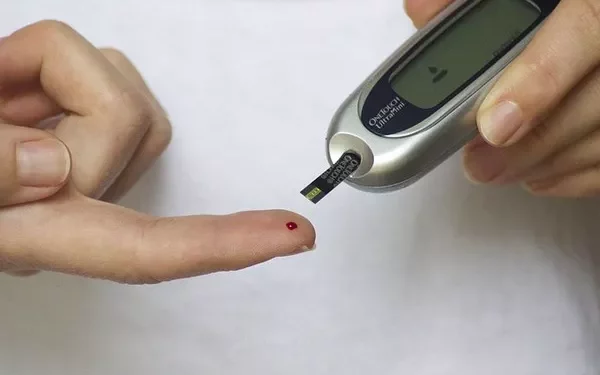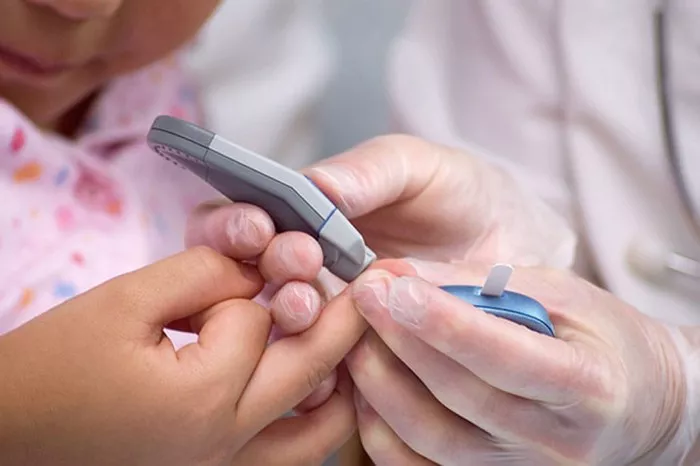Blood sugar (BS), or blood glucose, plays a pivotal role in the overall health and functioning of the body. As the primary source of energy for cells, glucose is transported through the bloodstream and regulated by insulin. The ability to maintain blood sugar within a normal range is essential for good health, particularly for individuals diagnosed with diabetes or prediabetes. Monitoring blood glucose levels is crucial for managing diabetes and preventing complications, but it can be difficult for many to know what constitutes a “normal” blood sugar level and how it should be managed.
This article delves into the definition of normal blood sugar levels, the different methods of measuring glucose, and how those measurements can be interpreted. Additionally, we will explore factors that influence blood sugar and offer advice on how to manage levels effectively, particularly for individuals with diabetes.
What Is Normal Blood Sugar?
Normal blood sugar levels refer to the range of glucose concentrations in the blood that are considered healthy and optimal for bodily functions. Maintaining blood sugar within this range is essential to avoid complications like nerve damage, cardiovascular disease, and kidney dysfunction, all of which can result from both high and low blood sugar levels.
Blood glucose readings can vary throughout the day based on a variety of factors, including meals, activity levels, and medications. However, the American Diabetes Association (ADA) has established clear guidelines for what is considered a normal blood sugar level, as well as thresholds for prediabetes and diabetes.
Normal Blood Sugar Ranges:
Fasting Blood Glucose (after 8 hours of fasting):
Normal: Less than 100 mg/dL (5.6 mmol/L).
Prediabetes: 100-125 mg/dL (5.6-6.9 mmol/L).
Diabetes: 126 mg/dL (7.0 mmol/L) or higher.
Postprandial Blood Glucose (2 hours after eating):
Normal: Less than 140 mg/dL (7.8 mmol/L).
Prediabetes: 140-199 mg/dL (7.8-11 mmol/L).
Diabetes: 200 mg/dL (11.1 mmol/L) or higher.
Hemoglobin A1c (average blood sugar over 2-3 months):
Normal: Below 5.7%.
Prediabetes: 5.7% – 6.4%.
Diabetes: 6.5% or higher.
Why is Blood Sugar Important?
Blood sugar levels indicate how well the body is managing glucose. Proper glucose metabolism ensures the efficient functioning of cells, particularly brain cells, which depend heavily on glucose for energy. Abnormal blood sugar levels, particularly high levels, can damage blood vessels, leading to complications such as heart disease, kidney disease, and neuropathy.
How Are Blood Sugar Levels Measured?
There are several different methods for measuring blood glucose levels. Each provides important information about the individual’s glucose regulation and helps in diagnosing diabetes and managing the condition over time.
Fasting Blood Glucose Test
The fasting blood glucose test measures blood sugar after a person has fasted for at least 8 hours. This test is often used to diagnose diabetes and prediabetes. Since the body’s glucose levels naturally fluctuate throughout the day, fasting provides a clear snapshot of baseline blood sugar without interference from recent meals.
Normal Range: Less than 100 mg/dL (5.6 mmol/L)
Prediabetes: 100-125 mg/dL (5.6-6.9 mmol/L)
Diabetes: 126 mg/dL (7.0 mmol/L) or higher
Oral Glucose Tolerance Test (OGTT)
The OGTT is commonly used for diagnosing gestational diabetes during pregnancy and for diagnosing type 2 diabetes. It involves consuming a sugary drink, followed by blood tests at regular intervals, usually 2 hours after consumption. This test helps to determine how efficiently your body processes glucose.
Normal Range (2-hour post-glucose drink): Less than 140 mg/dL (7.8 mmol/L)
Prediabetes: 140-199 mg/dL (7.8-11 mmol/L)
Diabetes: 200 mg/dL (11.1 mmol/L) or higher
Hemoglobin A1c Test
The HbA1c test measures the average blood glucose levels over the past 2-3 months, giving a broader view of a person’s blood sugar control. This test doesn’t require fasting and provides useful information about long-term blood sugar regulation, which is critical in managing diabetes.
Normal Range: Below 5.7%
Prediabetes: 5.7% – 6.4%
Diabetes: 6.5% or higher
Random Blood Glucose Test
A random blood glucose test can be taken at any time of day, regardless of meals. This test is often used when symptoms of high blood sugar, such as excessive thirst or urination, are present. It is not typically used for diagnostic purposes unless the results are extremely high.
Diabetes: 200 mg/dL (11.1 mmol/L) or higher, especially if accompanied by symptoms.
Continuous Glucose Monitoring (CGM)
Continuous glucose monitors (CGMs) provide real-time readings of blood glucose levels throughout the day and night. A small sensor placed under the skin sends data to a device, providing continuous insights into fluctuations in glucose levels. This technology is particularly helpful for individuals with type 1 diabetes or those who need frequent monitoring.
What Affects Blood Sugar Levels?
Blood sugar levels can fluctuate due to various factors that influence how the body processes glucose. These factors can include:
Diet and Food Choices
What you eat significantly impacts your blood sugar levels. Carbohydrates, particularly simple and refined carbohydrates, can cause a rapid increase in blood glucose. In contrast, foods high in fiber, healthy fats, and lean proteins can help stabilize blood sugar levels.
High Glycemic Index (GI) Foods: Foods with a high GI (e.g., white bread, white rice, sugary snacks) cause rapid spikes in blood glucose.
Low Glycemic Index Foods: Foods with a lower GI (e.g., whole grains, legumes, vegetables) have a slower, more gradual impact on blood glucose.
Physical Activity
Exercise plays a significant role in managing blood sugar levels. When you exercise, your muscles use glucose for energy, which helps lower blood sugar levels. Regular physical activity improves insulin sensitivity, allowing the body to utilize glucose more efficiently.
Aerobic exercise (e.g., walking, running, swimming) can reduce blood glucose levels for hours after exercise.
Strength training builds muscle, which helps the body use glucose more effectively.
Stress
Stress can cause blood glucose levels to rise due to the release of hormones like cortisol and adrenaline, which increase glucose production in the liver. Chronic stress, if not managed properly, can lead to consistently high blood sugar levels, worsening insulin resistance.
Medications
For individuals with diabetes, medications, including insulin, oral hypoglycemics, and other diabetes-specific drugs, play a critical role in controlling blood sugar levels. Mismanagement of medication, either taking too much or too little, can lead to fluctuations in blood sugar.
Insulin is required for type 1 diabetes and may be used for type 2 diabetes if other medications do not suffice.
Oral medications like metformin, sulfonylureas, and DPP-4 inhibitors help improve insulin sensitivity and control glucose production.
Illness and Infections
When the body is fighting an illness or infection, it releases hormones that can raise blood sugar levels. Additionally, certain medications used to treat illnesses (e.g., steroids) can also elevate blood glucose. Monitoring blood sugar during illness is important to avoid complications.
Sleep
Adequate sleep is crucial for maintaining normal blood glucose levels. Poor sleep or sleep deprivation can lead to insulin resistance, which can result in elevated blood sugar levels over time. The link between sleep and diabetes is well-established, as sleep deprivation can impact both appetite and glucose metabolism.
What Happens When Blood Sugar Levels Are Too High or Too Low?
Maintaining blood sugar within the normal range is essential for avoiding both short-term and long-term complications. When blood glucose levels are outside the normal range, it can lead to a variety of health issues.
High Blood Sugar (Hyperglycemia)
Hyperglycemia occurs when blood sugar levels are too high. This can happen when the body doesn’t have enough insulin or when it can’t use insulin properly. Symptoms of high blood sugar include excessive thirst, frequent urination, blurred vision, and fatigue. Over time, chronic hyperglycemia can cause serious complications, including:
- Heart disease
- Kidney damage
- Nerve damage (neuropathy)
- Eye damage (retinopathy)
- Increased risk of infection
Low Blood Sugar (Hypoglycemia)
Hypoglycemia occurs when blood glucose levels drop too low. This is often a concern for individuals who take insulin or other medications that increase insulin production. Symptoms of hypoglycemia include shakiness, dizziness, confusion, sweating, and irritability. If left untreated, severe hypoglycemia can lead to seizures, unconsciousness, or even death.
Treatment for hypoglycemia: Consuming a fast-acting carbohydrate, such as glucose tablets, juice, or regular soda, can help raise blood sugar levels quickly.
How to Maintain Normal Blood Sugar Levels
Maintaining normal blood sugar levels is essential for reducing the risk of complications and promoting long-term health. There are several strategies that can help achieve this goal:
Eat a Balanced Diet
Focus on a well-rounded, nutrient-dense diet that includes a variety of whole grains, fruits, vegetables, lean proteins, and healthy fats. Carbohydrates should be monitored, particularly those that have a high glycemic index, to prevent blood sugar spikes.
Regular Exercise
Exercise helps maintain normal blood sugar levels by improving insulin sensitivity and allowing muscles to use glucose more effectively. Aim for at least 150 minutes of moderate exercise per week.
Monitor Blood Sugar Levels Regularly
Frequent blood glucose monitoring helps track how different factors affect blood sugar levels. A continuous glucose monitor (CGM) can provide real-time data on blood sugar fluctuations, allowing for more precise adjustments to diet, activity, and medications.
Take Medications as Prescribed
For individuals with diabetes, taking prescribed medications as directed is crucial for managing blood sugar. Work with a healthcare provider to determine the appropriate medication regimen for your specific needs.
Conclusion: Understanding and Managing Normal Blood Sugar Levels
Maintaining blood sugar within the normal range is vital for anyone managing diabetes or prediabetes. By understanding what constitutes a normal blood sugar level and regularly monitoring glucose levels, individuals can take proactive steps to
improve their health. A balanced diet, regular physical activity, stress management, and proper medication adherence are all key components of effective blood sugar control.
If you have concerns about your blood glucose levels or need assistance with managing your diabetes, it’s important to consult with a healthcare provider who can guide you toward the best course of action based on your specific needs and health goals.
Related topics:
What Is the Minimum Level of Blood Sugar?



























